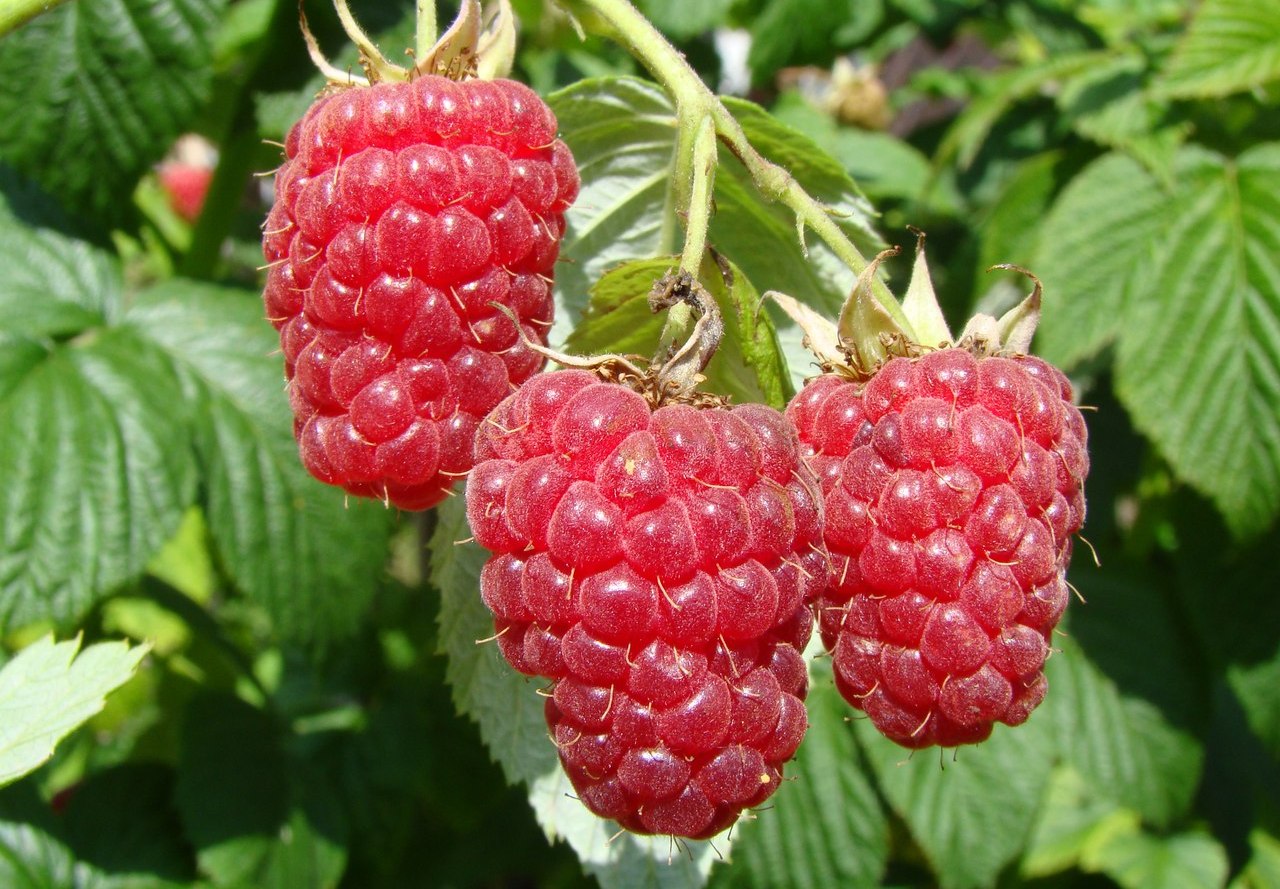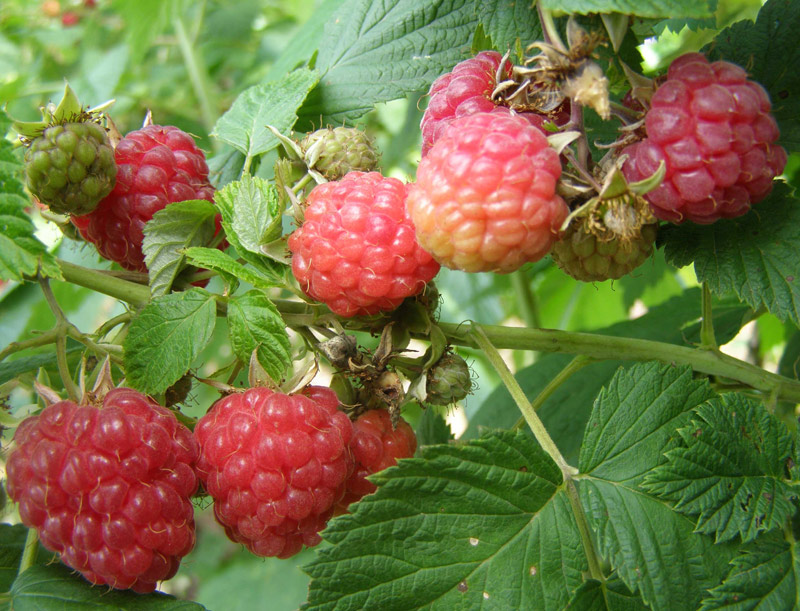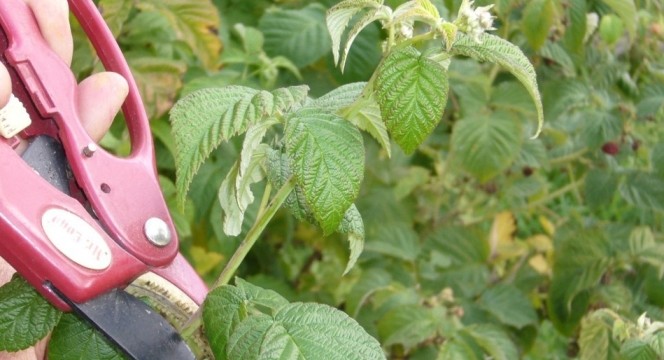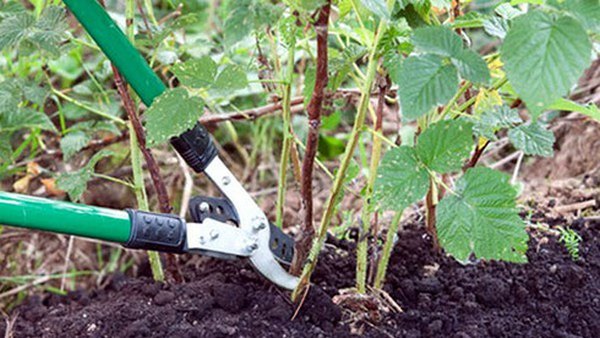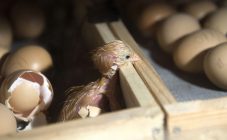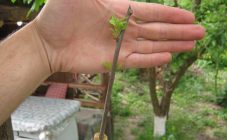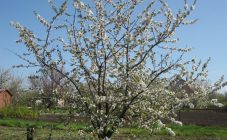Content:
Those who have recently become the owners of summer cottages are worried about the reasonable question: how many times in their lives raspberries bear fruit. In one place, a raspberry bush grows normally for about 25 years. The active phase of fruiting lasts 10-12 years, then the yield of raspberries drops significantly, and the gardener has to start new plantations. But if you make every effort, caring for the shrub, the fertile period can be extended to 20 years.
Raspberry food
Even young bushes do not always produce well. Solving the problem of how to increase raspberry yields, gardeners, first of all, try to feed the plantation. The introduction of manure, compost or peat at the rate of 15 kg per 1 square meter will help to increase fruiting. m. But here you should also take into account the composition of the soil:
- more organic matter should go into clay soil in order to improve the quality of the soil;
- in sandstones, all fertilizers are quickly re-heated, so top dressing will have to be done annually; in this case, less organic components are taken than mineral ones.
Nitrogen fertilizers (urea, saltpeter) help to significantly increase the yield, which are applied to the site in stages:
- in early April;
- in the middle of May;
- in the second decade of June.
In one go, 2.5 kg of fertilizers are used for each hundred square meters of berries. In addition to nitrogen nutrition, potash is also needed, which is introduced into the soil once a year, regardless of the season (autumn or spring). Potassium-containing mineral water needs 3-4 kg per hundred square meters. Alternatively, 40 kg of wood ash can be used.
Yield
Raspberries will bear fruit anyway, even if their place of deployment is in the forest. But how high the yields, in the first place, depend on the variety of the variety. The table below will show how much raspberry can be harvested from 1 weave under average agricultural conditions.
Yield indicators of some varieties
| Variety | Average weight of fruits, g. | Productivity, kg / weave |
|---|---|---|
| Hussar | 5 | 85 |
| Gloria | 4.5 | 90 |
| Yellow giant | 6 | 100 |
| Mollis Promise | 4 | 120 |
| Glen Ample | 4 | 150 |
| Hercules | 10 | 180 |
| Arbat | 12 | 200 |
| Maroseyka | 10 | 200 |
| Cumberland | 2 | 240 |
Choosing suitable varieties, take into account their ability to adapt to climatic conditions. For example, raspberries, for which the Kuban is a fertile land in all respects, will also not bear fruit abundantly, once in the Leningrad district.
A beginner in gardening art is interested in the question of how to increase the yield of raspberries for a reason, because there are many secrets in agricultural technology that are learned with experience.
If in the process of searching for advice on the Internet the phrase "Miro raspberry" appears, it should be borne in mind that this is not a variety, and this site has nothing to do with gardening.
What affects fruiting
Both regular and remontant varieties begin to produce berries the next year after planting. Some summer residents, not waiting for the desired harvest, are wondering why raspberries do not bear fruit. Often the reason is infection with viral diseases introduced to the site along with the seedlings.But usually the culprit is the gardener's inattention to his plantings.
What affects fruiting
| Factor | How does it affect | What to do |
|---|---|---|
| Dead wood on the bush | Old branches begin to dry up and do not allow young shoots to develop | Every spring, dry and weak stems are cut, and the tops of the fruits are shortened by 5-15 cm |
| Berry thickened | Overgrown bushes (or initially planted close) interfere with each other's development | · When planting, they maintain a certain pattern, providing each seedling with free space; |
| When the plantation is thickened, thinning is carried out, carefully digging out young shoots and transferring them to another place, forming a new berry | ||
| The soil structure is too dense | Roots develop poorly in compacted soil and do not receive oxygen in the required amount | · Do not plant raspberries on clay soils; |
| Loosening the near-trunk circle after watering will make the ground more fluffy | ||
| Lack of moisture during the ovary period | It takes a lot of effort to form fruit. Moisture is needed to enhance the flow of sap, transporting nutrients to the ovaries. If there is a shortage of water, the berries will not have time to ripen. | At this stage, you need to take care of abundant irrigation. If there is sultry weather outside without rains, then the plants are watered until the ground accepts moisture |
| Plague of ants | These insects love to feast on the nectar of raspberry flowers, completely gnawing them, thereby depriving the plant of ovaries | · Carefully examine each bush from the moment it began to bloom in order to detect pests in time; |
| · For prevention, the bushes can be treated with special agents; | ||
| · On the site, all anthills should be removed, sprinkling them with tobacco dust. Also use granules "Thunder" |
Knowing when raspberries begin to bear fruit after planting, it will be easier for a summer resident to notice deviations in the development of the berry. Therefore, taking into account the description of the problems, providing the bushes with decent care, you can not only maintain fertility, but also ensure its increase.
Planting raspberries
Regardless of which varieties are planted, the preparation of the site for the plantation is always the same. An open, non-shaded area with a low groundwater table is chosen.
These fertilizers are applied to the soil in advance, before digging the site. In the spring of next year, urea is added to the soil - 100 g / m2.
Bushes should be planted taking into account the type of raspberry - some points are different for remontant and ordinary ones.
Features of planting raspberries
| Landing moments | Repair bush | Usual |
|---|---|---|
| Landing time | From the beginning of October until the first frost | Early spring or first month of autumn |
| Scheme - distance (m) between rows / between bushes | 1,5/0,75 | 02.01.2018 |
| Hole (furrow) depth, m | 0,2-0,3 | 0,3-0,4 |
The schematic parameters indicated in the table may increase, depending on the varietal characteristics of the crop.
When planting raspberry varieties on the site, they should not be combined into one plantation. The same applies to varieties with different ripening periods. Better to plant them in different parts of the garden. Separate planting (if the dacha allows) will create better conditions for observing the rules of care and harvesting.
How to care for the first year
In the first season, the culture spends energy on rooting, so you should not wait for berries during this period. The main care of a gardener is to enable plants to quickly adapt to a new place.
After planting seedlings, the soil around the bush should be immediately mulched with hay or compost. This will facilitate subsequent summer care during spring planting and will allow the bushes to winter more comfortably if the planting was carried out in the fall.
Pay attention to trimming.The first is carried out immediately after planting the bushes: in the spring, the shoot is shortened by 1/3, with the autumn procedure, it is cut to hemp. For those plants that were planted at the beginning of the growing season, excess shoots are removed during the summer in order to form a bush with an optimal number of stems.
The rest of the care for spring seedlings is reduced to loosening the soil, removing weeds, and regular watering.
Spring raspberry care
To have a fruitful raspberry garden, care for the berry must be started without waiting for stable warming. Every month of the spring season is full of garden work.
March
To find out if pests have wintered on the bush, experienced gardeners cut several cuttings in early March. In this case, it is necessary to take not only biennial shoots, but also annual ones. Cuttings are placed in water and kept at room temperature until bud break. Then they are carefully examined (it is worth using a magnifying glass), the presence of larvae is a signal for early spring spraying of the bushes.
In warm regions of the country, during this period, you can already see a kidney moth on raspberries. Because of her, the bushes look like burnt. Even if there are no signs of damage, the raspberry tree is treated with fungicides.
Spraying with Bordeaux liquid (3%) will help protect the berry from fungal spores. Spring feeding with a solution of urea (5%), which is used to treat not only bushes, but also the land around, will also relieve pathogens from pathogens.
At this stage, sanitary pruning of raspberries is carried out. Damaged, frozen and old shoots that remained to winter are cut out.
April
This month, when inspecting the shrubs on the shoots, you can see rounded swellings - a sign of a stem gall midge. Large blurred spots of various shades indicate the development of purple spot. April is the time to fight these problems. With a weak lesion, it is enough to cut out the diseased branches, with a strong one - treat with fungicides. But you need to use chemicals before the buds begin to open.
The soil around the bushes is treated with a solution of potassium chloride 10% - 2.5 liters per 10 sq. M. You can also use 7% urea. Spraying will fertilize the plants and destroy the clutches of pests that have overwintered in old leaves or soil.
If early spring treatment was not carried out, this can be done in April, using copper oxychloride 0.3% in case of detection of insects or Bordeaux liquid 3% as a prophylaxis.
May
The last month of spring is the time of the aphid invasion. Therefore, you will have to carry out a double chemical treatment of the berry: at the time of budding and before the discoloration. If there is a risk of visiting the site with leafhoppers, you can do another spraying in 2-3 weeks.
Finding leaves covered with aphids on the bushes, they are cut off and burned. If in the middle of May the young shoots wilted and bent sickle, it means that raspberry flies took over the plants. The damaged areas should be trimmed.
At the same time, raspberries and currants are infected with mosaic and curl. If there are no signs of the disease on the bushes, the berries are treated with insecticides. Otherwise, diseased shoots will have to be cut.
In May, return frosts are possible in some regions. To protect the garden berry, it is watered abundantly. A good result will be given by the smoke of the site. Mulching helps to avoid frost. It will save the plants even if May turned out to be hot - it will not allow moisture to quickly evaporate from the soil.
By the end of the month, when the color crumbles, the shrubs are thinned out, removing excess growth. Weeds have already actively climbed, which need to be removed in a timely manner. Do not forget about loosening the soil, otherwise the soil in the plantings will be compacted.
Summer raspberry care
Summer is not only the period when raspberries ripen, but also the time of active gardening. Watering, loosening, weeding, weed control - the summer resident carries out these works regularly to protect the raspberry tree from disease. Such actions will ensure increased yield.
For those who appear on the site from time to time, periodic updating of the mulch will help to ease the care. For irrigation, it is recommended to use a stand-alone sprinkler or drip method. The rest of the work is done according to the garden calendar.
June
The first month of summer is characterized by the appearance of berries on the bushes, as well as by the activity of caterpillars eating fruits. When raspberries ripen, it is no longer possible to use chemicals, but industrial biologicals and based on folk recipes are quite suitable.
If the plantation is small, the larvae can be harvested by hand (with a gloved hand). It is also recommended to attract beneficial insects to the site, which will destroy caterpillars and aphids. To do this, a strip of dill, mustard, parsley or phacelia is planted along the raspberry tree.
For harmful butterflies, food bait traps are installed near the raspberry-tree - plastic containers with fermented syrup, compote or jam (you can also use candied fruit).
The ants living on the site cultivate aphids. Therefore, in June it is necessary to control these insects. Having removed a layer of soil 2-3 cm thick around the anthill, lay out the "Thunder" granules and cover them with earth. The same is done on the paths along which insects scurry.
July
In the middle of summer, continue to freshen the traps with raspberry juice. The number of watering is increased if the season is not rainy, otherwise the ripe fruit will bake from the heat and quickly crumble.
If cuttings were collected for propagation in the spring, July is a suitable month for their rooting. During this period, it is worth taking care of the formation of layers. For this purpose, the extreme young shoots are added in, placing them radially from the bush.
August
They continue to carry out basic work: regular feeding, watering, loosening the soil, removing weeds and overgrowth.
August is the time when the varieties of ordinary raspberries have already hatched, and ripening is still underway on the remontant. This month, you can safely cut off those stems that have had time to yield.
If the branches of the remontant raspberry are overloaded with fruits, you need to make another garter of shoots or install additional supports.
Shaping and pinching raspberries
One of the points in growing a berry plant is the formation of bushes. This allows you to make the plants stronger, as well as to solve the problem of how to accelerate the ripening of remontant raspberries. Forming is carried out, observing the following principles:
- overgrowth and stems of renewal are removed completely; leave on the bushes several of the strongest young shoots and fruits of the current year;
- pinch new stems until mid-July, shortening the tops by 10-15 cm; this will allow the formation of twigs throughout the shoot, which will appear from the axillary buds; a good harvest can be expected next year;
- at the end of autumn, the branched shoots are bent to the ground and pinned, preparing for the winter; spawned stems are cut at the root;
- in spring, branches are freed from snow, sanitary pruning is carried out and the remaining shoots are tied to a trellis;
- on overwintered stems, side branches are now pinched, since the top no longer grows.
While last year's stems are blooming and bearing fruit, the described manipulations are performed with new shoots. Now the summer resident will not have to think about when the raspberries are ripe - on the stems pinched last year, he will receive bountiful harvests of large berries throughout the summer.
Autumn care
This period is characterized by the end of the fruiting of remontant raspberries and the preparation of the berries for winter. In the fall season, gardening work can also be distributed by month.
September
The harvesting of berries continues. It is advisable to immediately remove fallen fruits from under the bushes, as they attract insects to themselves.
Carrying out the next loosening of the soil, phosphate-potassium fertilizer is applied under the berries. Such top dressing will allow depleted fruiting plants to calmly endure winter frosts.
October
There are less and less good days, so summer residents are trying to keep up with the main work in the garden:
- prepared cuttings for propagation are sent to the cellar for storage;
- new seedlings are planted in a permanent place, not forgetting to disinfect the roots in copper sulfate;
- the soil around the plants is dug, but shallow, so as not to catch the roots of the raspberry;
- root growth is removed;
- spread fresh mulch under the plants.
If it becomes necessary to remove old bushes, then October is the most suitable month for this.
In the middle of autumn, the last pruning of raspberries is carried out. The remaining shoots are prepared for winter.
November
Newbie summer residents in this period already forget about gardening troubles, although at this time they still have a lot of work:
- the root area of varieties that do not tolerate frost is covered with organic matter: sawdust, straw, leaves, compost, peat (if this was not done in October);
- mice can get into the area and spoil the remaining shoots, so it is recommended to spread the poison for rodents around the raspberries;
- if the snow has already fallen, it is scooped up to the bushes; it is especially important to cover young plants with such a “blanket”.
In colder regions (like the Urals and Siberia), as well as in areas with little snowy winters, the berry is additionally covered with spruce branches, spandbod or burlap.
Growing raspberries is a painstaking work that allows you to significantly increase the fertility of plants. With poor agricultural technology, the berry growers get sick and give few fruits that lose their taste.
